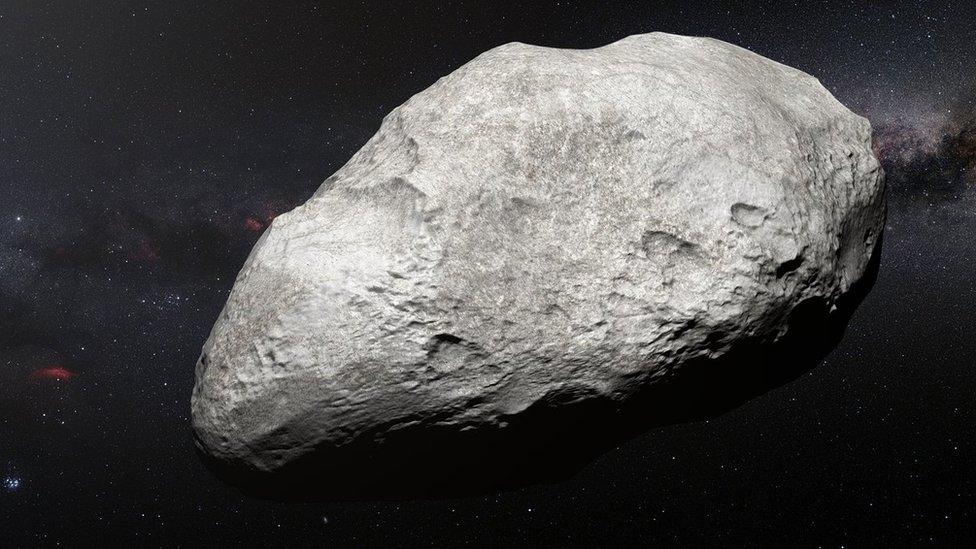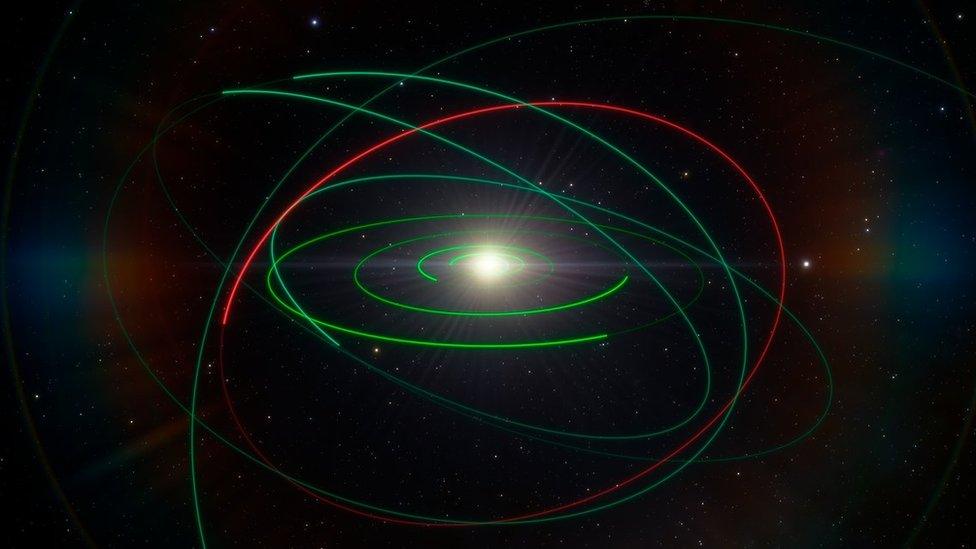Lonely asteroid tells Solar System story
- Published

Illustraion: 2004 EW95 orbits four billion kilometres from Earth
Researchers have observed the first object of its kind - a carbon-rich asteroid in the Kuiper Belt.
Orbiting in the collection of icy rubble beyond Neptune, the asteroid's composition strongly suggests it did not form there.
Instead, the 300km-wide object may have been ejected from an orbit among the giant planets, during the turbulent early history of the Solar System.
The object is so distant, it took scientists several years to analyse.
"When we first actually got the data, we thought we'd got something wrong," Queen's University Belfast researcher Tom Seccull told BBC News. "It didn't look like other objects in the Kuiper Belt at all."
Most objects in this region of space have ice-rich surfaces. This asteroid, known as 2004 EW95, is not just carbon-rich but also contains minerals known as phyllosilicates - a family which includes clay and talc.

Illustration: most Kuiper Belt objects are ice-rich
"The features that we see occur in asteroids that have had their rocks altered by the presence of liquid water," Seccull explains. "Because [2004 EW95] is so far away from the Sun, it's about -235C, so all the water on its surface is going to be frozen."
"This implies it's actually been heated at some point, and could have formed closer to the Sun."
Dr Rhian Jones from Manchester University, who was not involved in the study, noted that this made the findings particularly interesting, "providing the first good evidence for phyllosilicates in a Kuiper Belt object."

The asteroid's orbit (red) is highly eccentric, suggesting it has been disturbed
One model of Solar System formation, known as the grand tack, proposes that the early Solar System was quite a rowdy neighbourhood - with Jupiter and Saturn first migrating towards the Sun, then moving back out to their current position.
This process would have scattered some early bodies that formed amongst the gas giants into the outer reaches of the solar system... where they could remain today.
Seccull says that there are more objects in the Kuiper Belt that appear to be similar to 2004 EW95, but it is very difficult to get enough detail.
"It was at the very ragged edge of what it was possible to observe really. It's large by asteroid standards but small by observable Kuiper Belt object standards."
Nasa's New Horizons mission is due to rendezvous with Kuiper Belt object 2014 MU69, now known as Ultima Thule, on January 1 2019. It is hoped that the mission will reveal more about the bodies occupying this region of the outer Solar System.